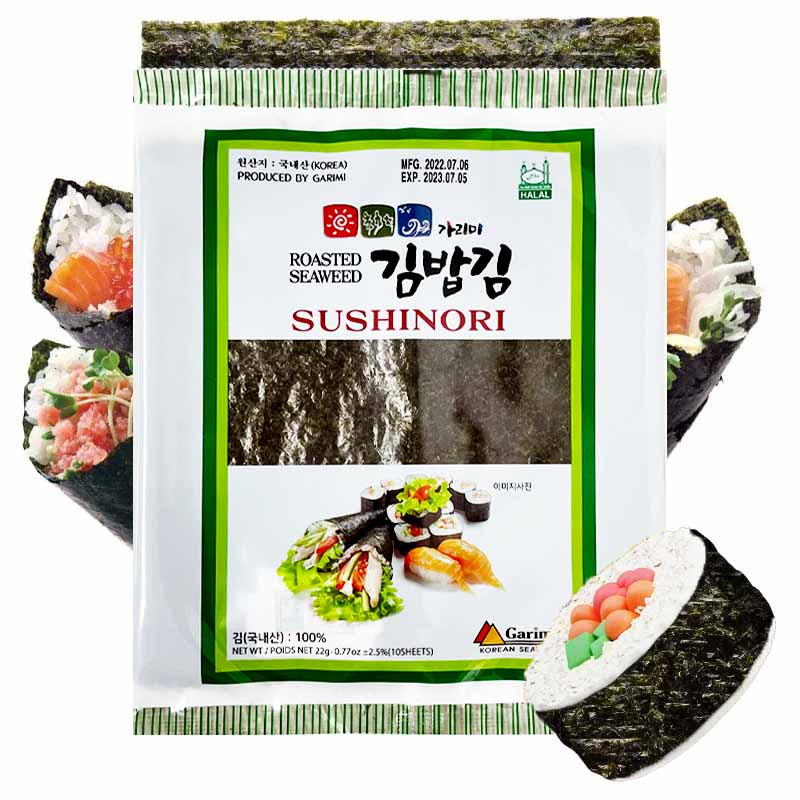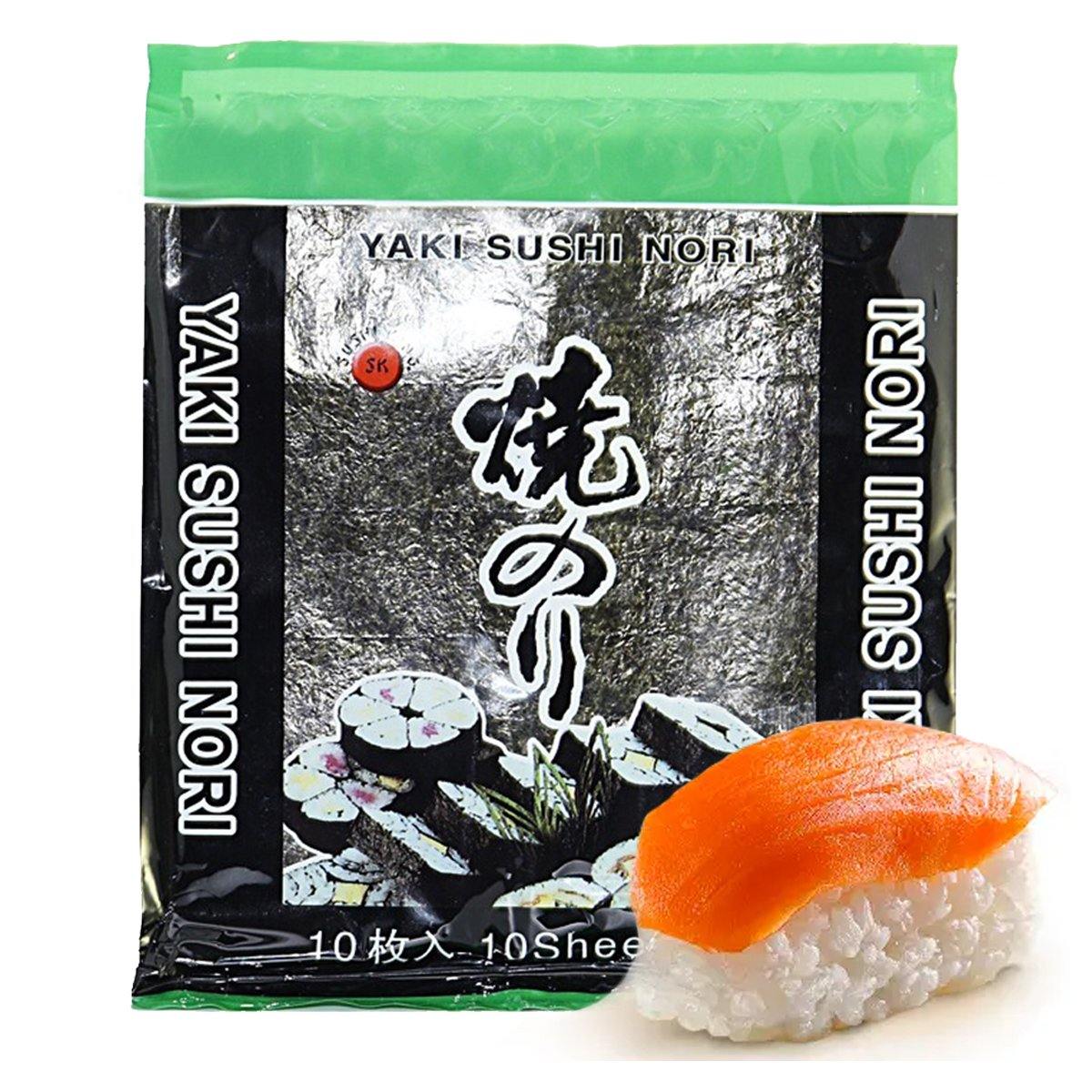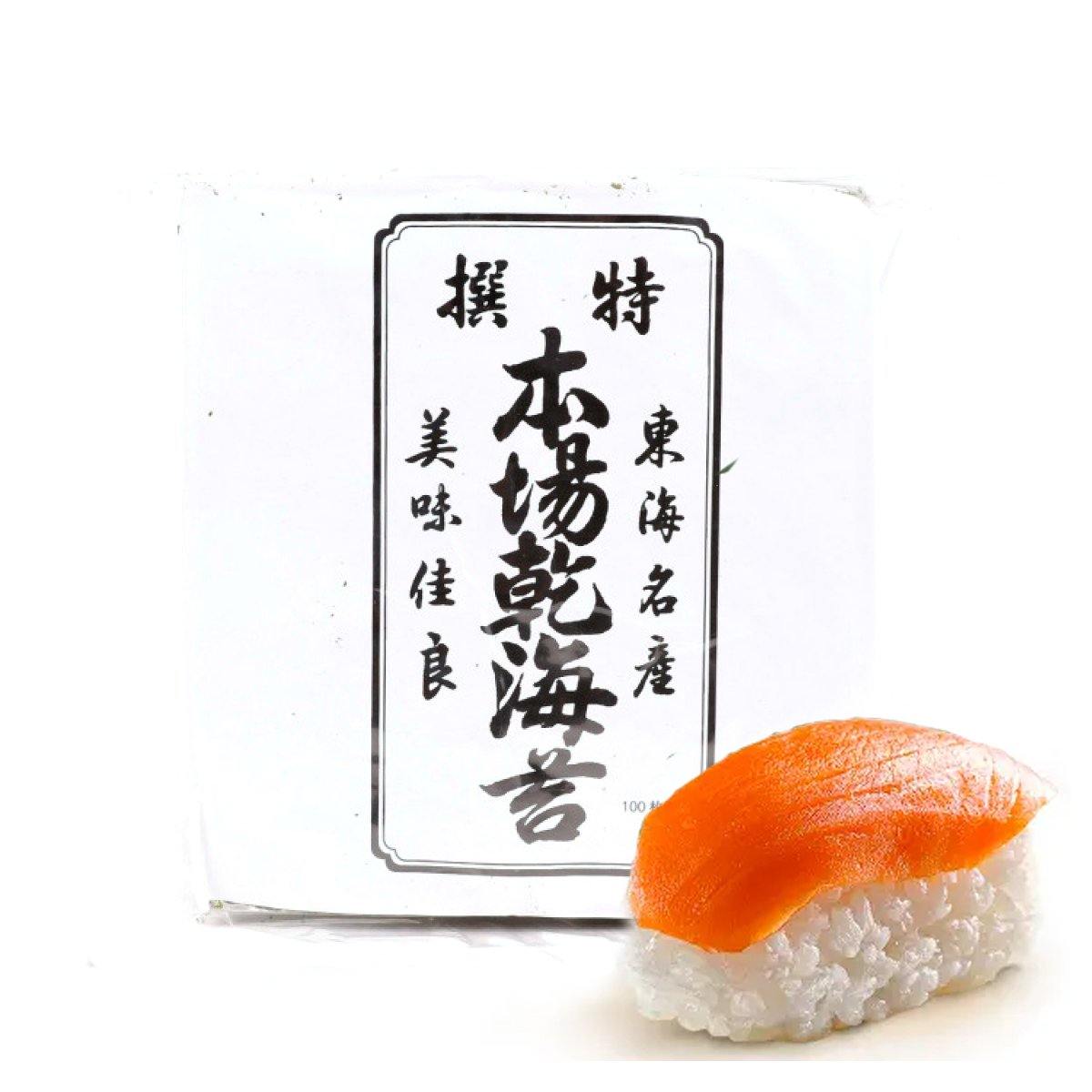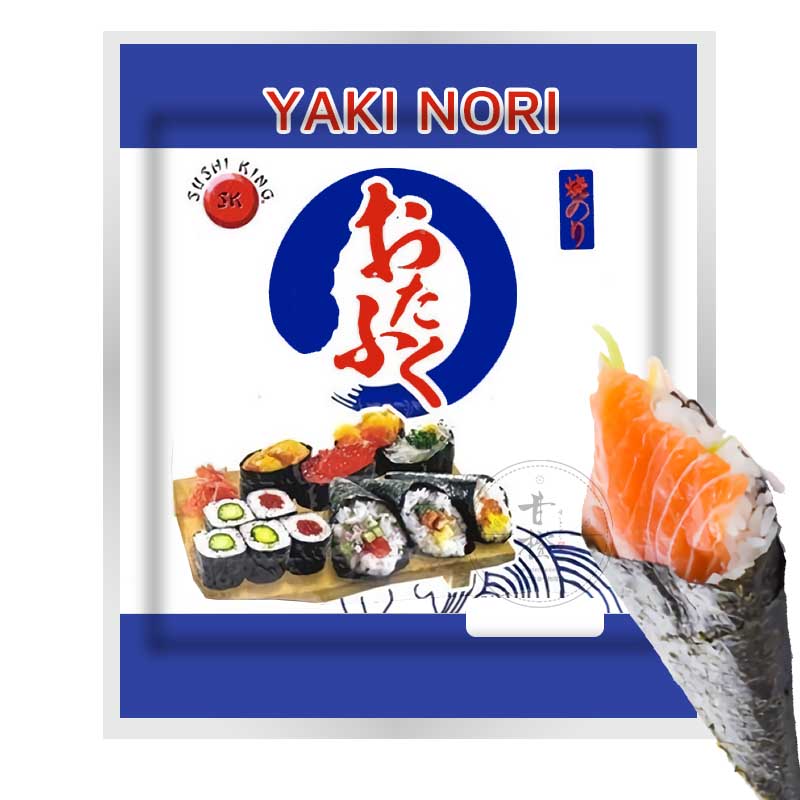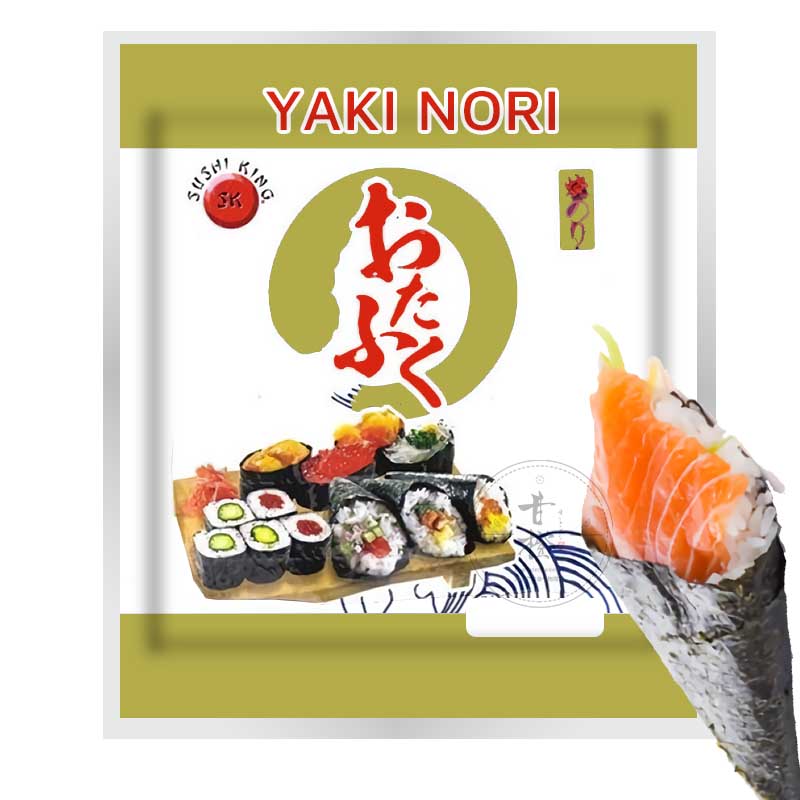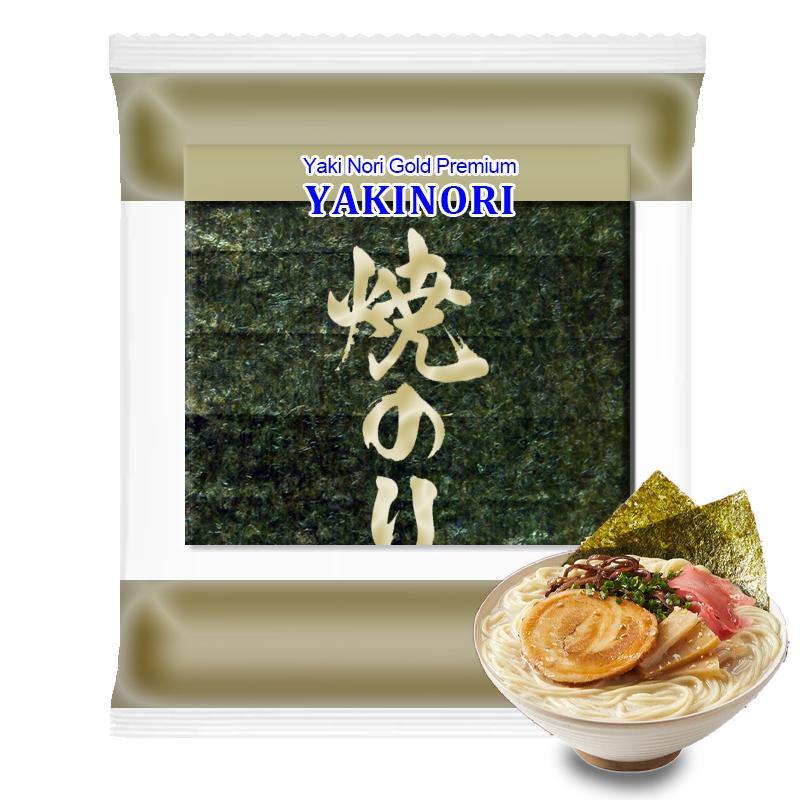Nori seaweed
Properties, benefits, recipes, where to buy
Have you ever tried sushi? If so, you're probably already familiar with nori seaweed, the dark green wrapper that holds all the sushi ingredients together. This superfood, of Japanese origin, has been gaining popularity around the world, both in home kitchens and in restaurants. But did you know that nori seaweed is much more than just a culinary tool? It is a rich and nutritious food that offers a series of health benefits, known as "nori seaweed properties." Join us on this journey as we explore the properties of nori seaweed, where to buy it and how you can incorporate it into your homemade recipes. We promise that eventually you'll want to include this superfood in your regular diet. Let's get started!
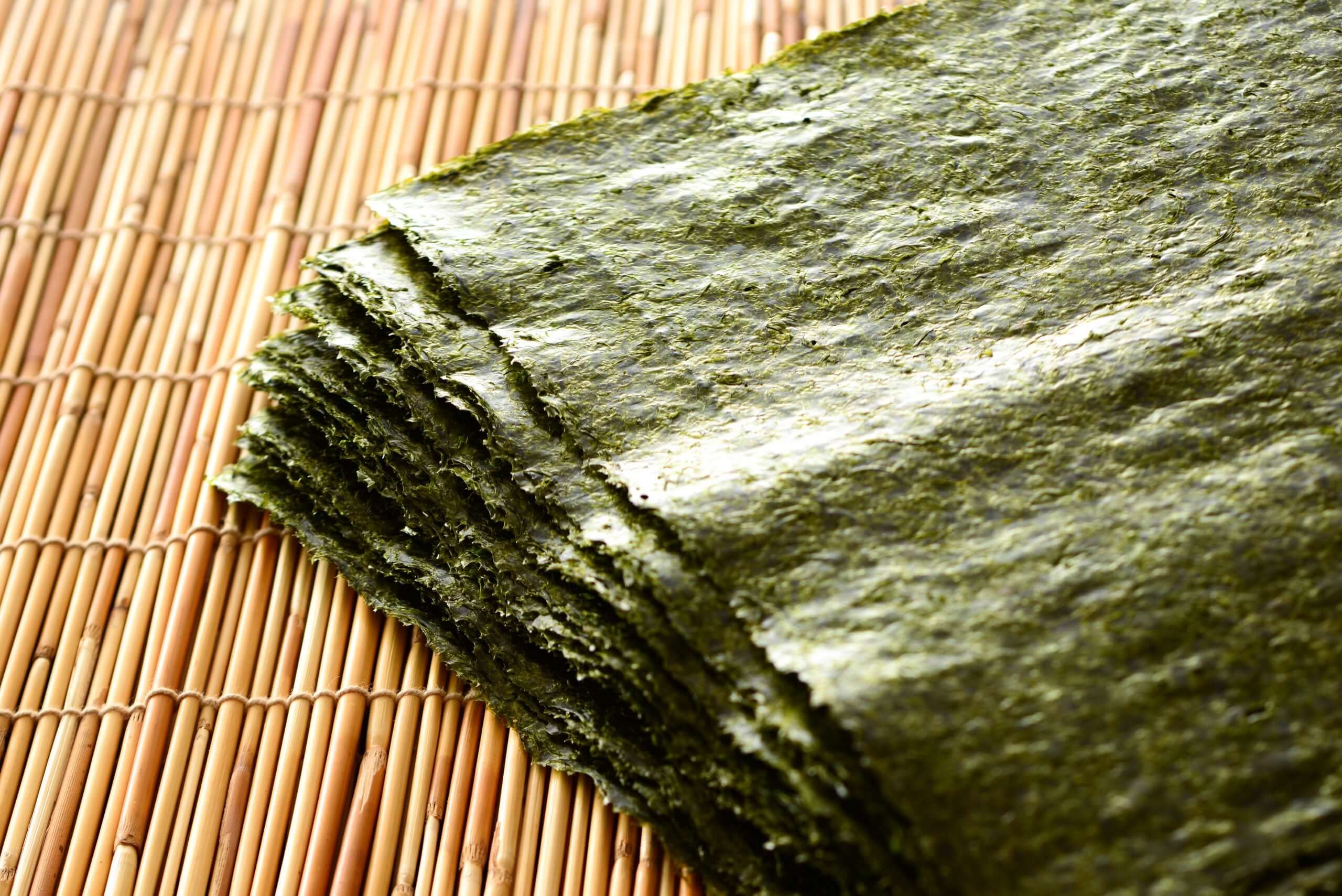
What is nori seaweed?
The term Nori is also related to food products made from these marine plants. They are prepared by chopping the algae into traces and dehydrating them with a process similar to that used in paper.
Thus, the product resulting from nori seaweed is commonly used to roll both sushi and onigiri. Nori is also consumed in the form of a paste, seasoned with a soy sauce called Noritsukudani.
Nori seaweed is also used in dried and powdered form, which is called aonori.
Nori Seaweed Properties
Nori seaweed is a superfood that, despite its discreet size, contains a universe of flavors and nutritional properties. It is known for being the dark green wrapper that gives sushi rolls their characteristic shape, but the benefits of Nori seaweed go beyond its usefulness in Japanese cuisine.
Nori seaweed is an excellent source of protein and contains all the essential amino acids, making it a perfect ally for vegan and vegetarian diets. In addition, it is rich in vitamins and minerals, especially vitamin A, C and B12, as well as iron and calcium.
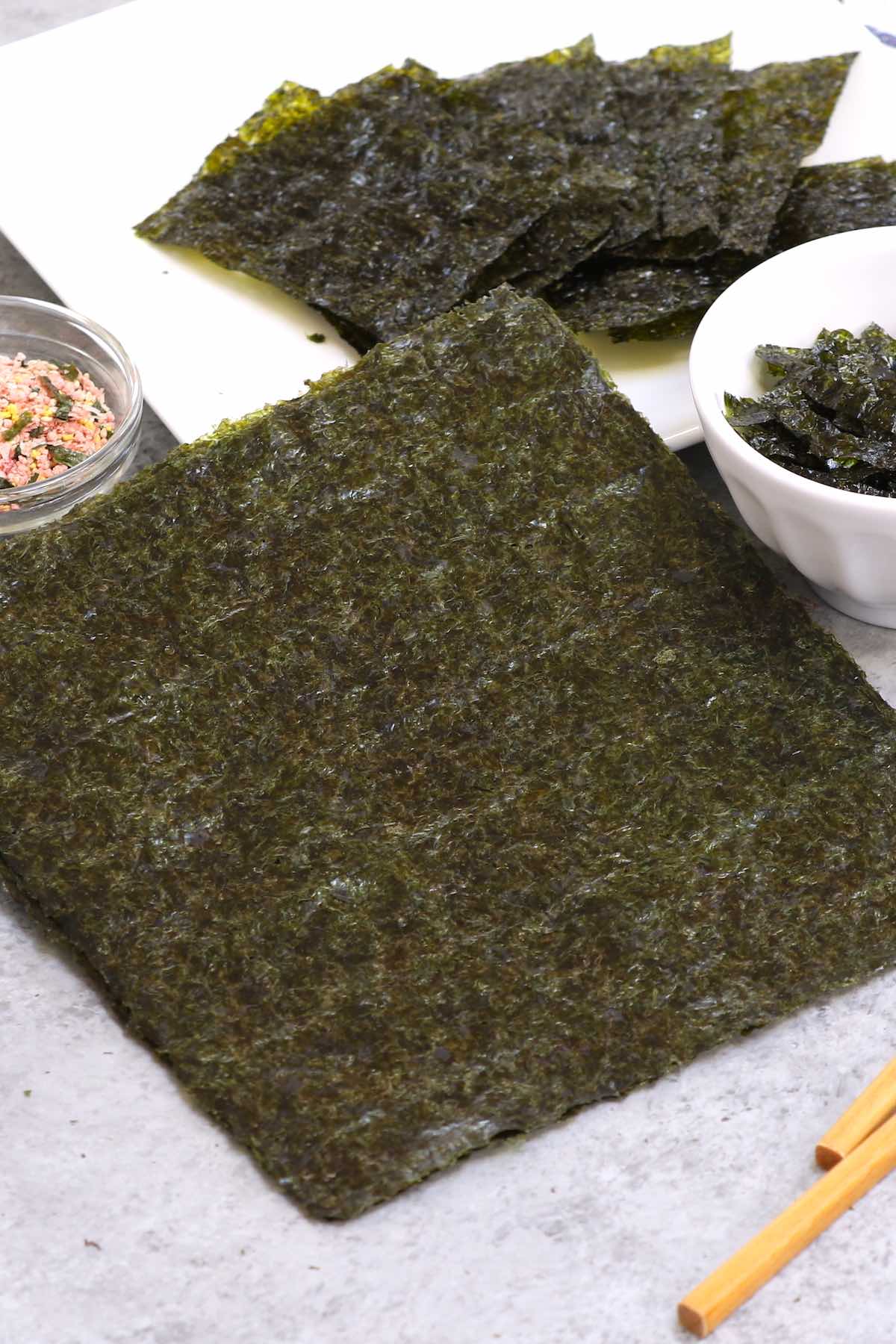
Health benefits of nori seaweed
- Generally, vitamin C is afraid of high temperature and will easily disappear after cooking. However, the vitamin C in nori seaweed can withstand high temperatures, even if it has been roasted, it still has the effect of whitening and reducing stains. People with a smoking habit also suggest that they can add more vitamin C.
- Approximately 1/3 of nori seaweed is made up of dietary fiber and its content is twice that of spinach . In addition to regulating the intestine and improving constipation, dietary fiber can also reduce blood cholesterol and promote the excretion of carcinogens from the body. In addition, it is also effective in preventing diabetes and arteriosclerosis. The dietary fiber in nori seaweed is different from that of common vegetables, as it is softer, does not damage the gastrointestinal wall, and is suitable for everyone's consumption.
- Nori contains 12 types of vitamins. As long as you take 2 large tablets a day, you can get the vitamin A children need in one day. Help children maintain their health.
- Vitamin B1 and vitamin B2 can convert carbohydrates into energy for the body to consume. So the rice ball wrapped in nori seaweed is actually very reasonable! Eating nori seaweed when there is no appetite or fatigue can restore your mood.
- When it comes to iron supplements to prevent anemia, most people think of liver or spinach, but nori seaweed is actually rich in iron. Nori seaweed is a good iron supplement option for people who are hesitant to eat liver or who are prone to allergies from consuming milk.
- Modern people are prone to a lack of minerals such as calcium and iodine, which can be supplemented in large quantities with nori seaweed, which is especially suitable for children. Calcium can not only maintain bone health but also calm anxiety.
- Nori contains beta-carotene, which may prevent cancer, and EPA, which may lower cholesterol. EPA is generally found in fish such as saury. Those who do not like fish can eat nori seaweed to prevent lifestyle diseases.
- After drinking alcohol, the liver needs a lot of protein to break down. Nori contains protein and taurine (Taurine can reduce bad cholesterol in the body and also has a preventive effect on cardiovascular diseases such as arteriosclerosis and myocardial infarction), which has a strong liver effect . So when you drink, you can choose dishes containing seaweed, which are delicious and will not cause physical burden.
Nutrition
- It has a lot of nutrition and high iodine content. It can be used to treat "goiter" caused by iodine deficiency. Porphyra has the function of softening and resolving masses, and is also useful for other stagnant masses;
- It is rich in choline, calcium and iron, can improve memory, treat maternal and childhood anemia, promote the growth and health of bones and teeth; contains a certain amount of mannitol, which can be used as auxiliary food for the treatment of edema;
- The polysaccharides contained in the seaweed can significantly improve cellular immunity and humoral immunity, can promote the transformation of lymphocytes and improve the body's immunity, can significantly reduce the total serum cholesterol content;
- The effective ingredients of laver have a 53.2% inhibition rate against Ehrlich cancer, which is useful for the prevention and treatment of brain tumors, breast cancer, thyroid cancer, malignant lymphoma and other tumors.
How to use Nori Seaweed?
- Salads : Soak a little for a few minutes and add them to the salad.
- In soups and purees : Add to cooking and let cook for a few minutes.
- Rice balls: Cut them into squares and toast for a few seconds over low heat. Place them directly in the pan and without oil. Prepare the rice balls, covering each one with two squares of already toasted seaweed, one on the bottom and one on top. Glue them well and make the rounded shape.
- In flakes : if you buy the nori seaweed in flake form, you won't have to do anything else. Simply sprinkle them on any dish or stew.
- Stir-fry : Added to a stir-fry with other vegetables and greens.
- In vegetable pâtés : They can be added once cooked to any vegetable pâté, for example mushroom pâté.
Receta de Rollos de sushi maki
Ingredientes
- 100 g de arroz para sushi
- 1 hoja de alga nori
- 2 cucharadas de vinagre de sushi
- Salsa de soja
- Wasabi
- Jengibre de sushi
- Semillas de sésamo blanco tostadas (opcional)
- Opciones de relleno: Atún grado sashimi (crudo), Salmón grado sashimi (crudo), Aguacate, Pepino, Palitos de cangrejo, Atún enlatado mezclado con mayonesa, Langostinos
Instrucciones
- 1 Prepare arroz para sushi mezclándolo con vinagre especial de arroz para sushi.
- 2 Diseñe un área de preparación con su tapete enrollable makisu. Coloque una hoja de nori sobre el tapete y cubra dos tercios de un lado de su alga nori con su arroz de sushi de aproximadamente 1 cm de altura.
- 3 Agregue sus ingredientes en una línea sobre el arroz en el centro. Puede elegir cualquier combinación de ingredientes que se complementen bien.
- 4 Con el tapete, comience a enrollar los ingredientes lejos de usted mientras mantiene el rollo apretado. La humedad del arroz ayudará a que se pegue.
- 5 Corte su rollo en 6-8 piezas y sirva con un poco de salsa de soja, wasabi, jengibre para sushi y una taza de té verde sencha.
CONSEJOS E INFORMACIÓN:
Intente envolver su tapete de sushi con film transparente antes de comenzar a enrollar, ya que esto no solo hará que el tapete sea más fácil de limpiar después de usarlo, sino que también ayudará a que el arroz pegajoso no se atasque en el tapete.
Es una buena idea tener un recipiente con agua a su lado cuando esté haciendo makizushi, ya que es importante mantener los dedos húmedos para que el arroz no se pegue a ellos. También es una buena idea mantener el cuchillo húmedo cuando lo corte para garantizar un corte limpio.
Puede hacer lo que se llama un rollo Uramaki o un rollo de adentro hacia afuera. Esto se hace con el nori por dentro y el arroz por fuera del rollo. Uramaki es genial espolvoreado con semillas de sésamo blanco tostadas.
Puedes utilizar cualquier tipo de ingredientes para los rollos de sushi. Muchos de los populares como California Roll (palitos de cangrejo, aguacate y pepino) y el Philadelphia Roll (salmón ahumado, queso crema y pepino) se inventaron fuera de Japón.
Receta de Temaki Sushi (Sushi enrollado a mano)
Dale un toque de elegancia a tu próximo lote de sushi con esta receta de temaki zushi, o sushi enrollado a mano. Estos rollos de sushi en forma de cono se ven elegantes, pero en realidad son fáciles de hacer, saben muy bien y pueden contener cualquier relleno que desees.
Ingredientes
- 200 g de arroz para sushi
- 2 hojas de alga nori
- 50 ml de vinagre de sushi
- 1 cucharada de salsa de soja (opcional)
- Rellenos sugeridos: atún enlatado con mayonesa, atún, salmón, tortilla de tamagoyaki, aguacate, palitos de mariscos, langostinos, pepino
- Condimentos opcionales: mayonesa, sésamo blanco, sésamo negro, wasabi
Instrucciones
- 1 Después de cocinar 200 g de arroz, mezclar con 50 ml de vinagre de sushi y dejar enfriar antes de usar.
- 2 Prepara tus rellenos en tiras finas de 10 cm y corta las láminas de alga nori por la mitad.
- 3 En el lado rugoso de 1 pieza de nori esparce el arroz para sushi de manera que cubra la mitad izquierda. No es necesario esparcir el arroz hasta los bordes.
- 4 Si lo desea, espolvoree algunas semillas de sésamo sobre el arroz para darle más sabor.
- 5 Coloque la hoja de alga nori horizontalmente en su mano izquierda (puede hacerlo desde el principio, pero puede que le resulte más fácil una vez que se haya extendido el arroz).
- 6 Comience a agregar cualquier ingrediente en el centro sobre el arroz. Puede usar cualquier combinación, pero el salmón y el aguacate a menudo se complementan bien.
- 7 Ahora para enrollar el temaki. Primero, doble el lado relleno del relleno sobrante. A continuación, enrolle el lado liso de las algas nori desde la derecha, formando un cono con las manos. Asegure el extremo del rollo con un trozo de arroz húmedo prensado extraído del relleno.
- 8 Tu Temaki Zushi ya está listo para comer, disfrútalo.
CONSEJOS E INFORMACIÓN:
Puedes cortar el nori en cuartos para que tengas panecillos más pequeños y puedas disfrutar de más variedades de temaki.
Receta de Bolas de arroz onigiri
Onigiri son bolas de arroz, generalmente envueltas con alga nori y que contienen un relleno de carne o verduras. Al igual que los sándwiches en Occidente, el onigiri está disponible en tiendas de conveniencia en todo Japón y es ideal para un refrigerio rápido y fácil. Estéticamente agradables y muy sabrosos, son una alternativa divertida y abundante a los sándwiches para el almuerzo.
Ingredientes
- 65 g de arroz japonés cocido
- 1/4 hoja de alga nori
- pizca de sal
- Furikake (opcional)
- semillas de sésamo (opcional)
- pollo cocinado
- salmón cocido
- mayonesa japonesa
Preparación
- 1 Comience cocinando el arroz japonés según su método favorito.
- 2 Con una pequeña cantidad de sal espolvoreada en tus manos, moldea el arroz en bolitas o triángulos de aproximadamente 8 cm de ancho.
- 3 Crea un pequeño hueco en el centro del arroz e introduce los ingredientes que elijas. Luego, moldee el arroz con las manos alrededor del pozo para cubrir el relleno por completo.
- 4 Usando una hoja de alga nori, envuelva su bola de arroz.
- 5 Espolvorea algunas semillas de sésamo o furikake para ponerlas en el arroz para darle un poco más de sabor (opcional). Disfrútelo para un snack o durante el almuerzo.
Consejos e información
Si no estás seguro de hacer onigiri con las manos o manipular arroz caliente puedes usar un trozo de film transparente para moldear el arroz. Los ingredientes son suficientes para hacer un onigiri. Para hacer más, multiplique las cantidades de ingredientes por la cantidad de onigiri que desea preparar.
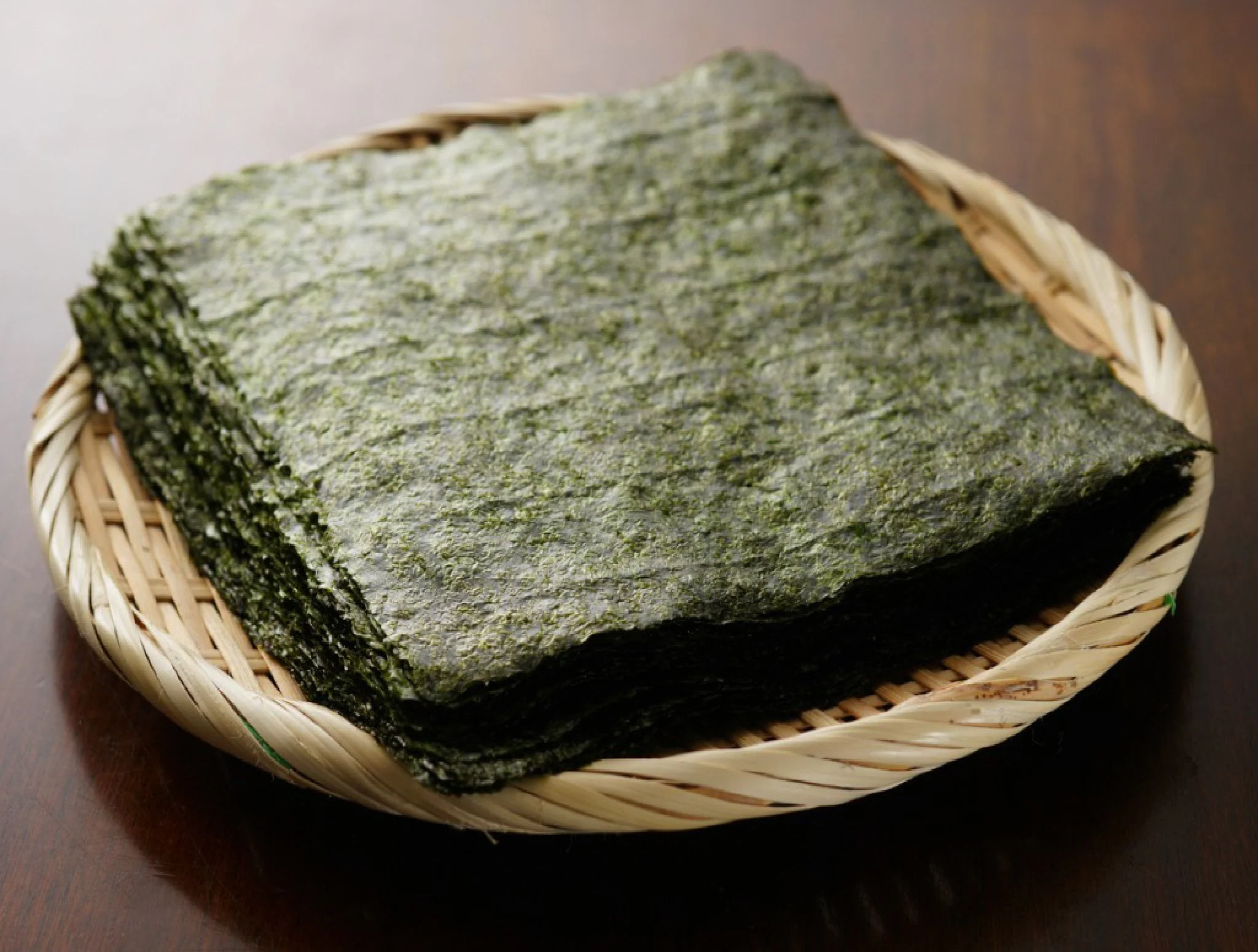
How to preserve nori seaweed?
Nori seaweed is susceptible to moisture, so it should be sealed and stored: Nori seaweed is very easy to affect the flavor due to moisture, so it should be sealed and stored. It is recommended to cut the purchased nori seaweed into the required size and put it in the preservation box together with the desiccant in the package and store it at room temperature. However, opening and closing the storage box will allow moisture to enter. It is recommended to finish eating as soon as possible within a few days.
Frozen and refrigerated nori seaweed: If you want to store it for a long time, place the nori seaweed in an airtight bag and freeze it for about a year. Each time the entire bag is taken out and placed at room temperature, the required amount is taken. If frozen, it can only be stored for 2 to 3 months. But if you want to eat the most delicious and nutritious nori seaweed, of course it is best to eat it fresh.
To buy
Blog

Benefits of Sesame Oil: Health and Cooking at its Best
The numerous benefits and uses of sesame oil in cooking, personal care and health. Learn how to take advantage of its antioxidant and anti-inflammatory properties.
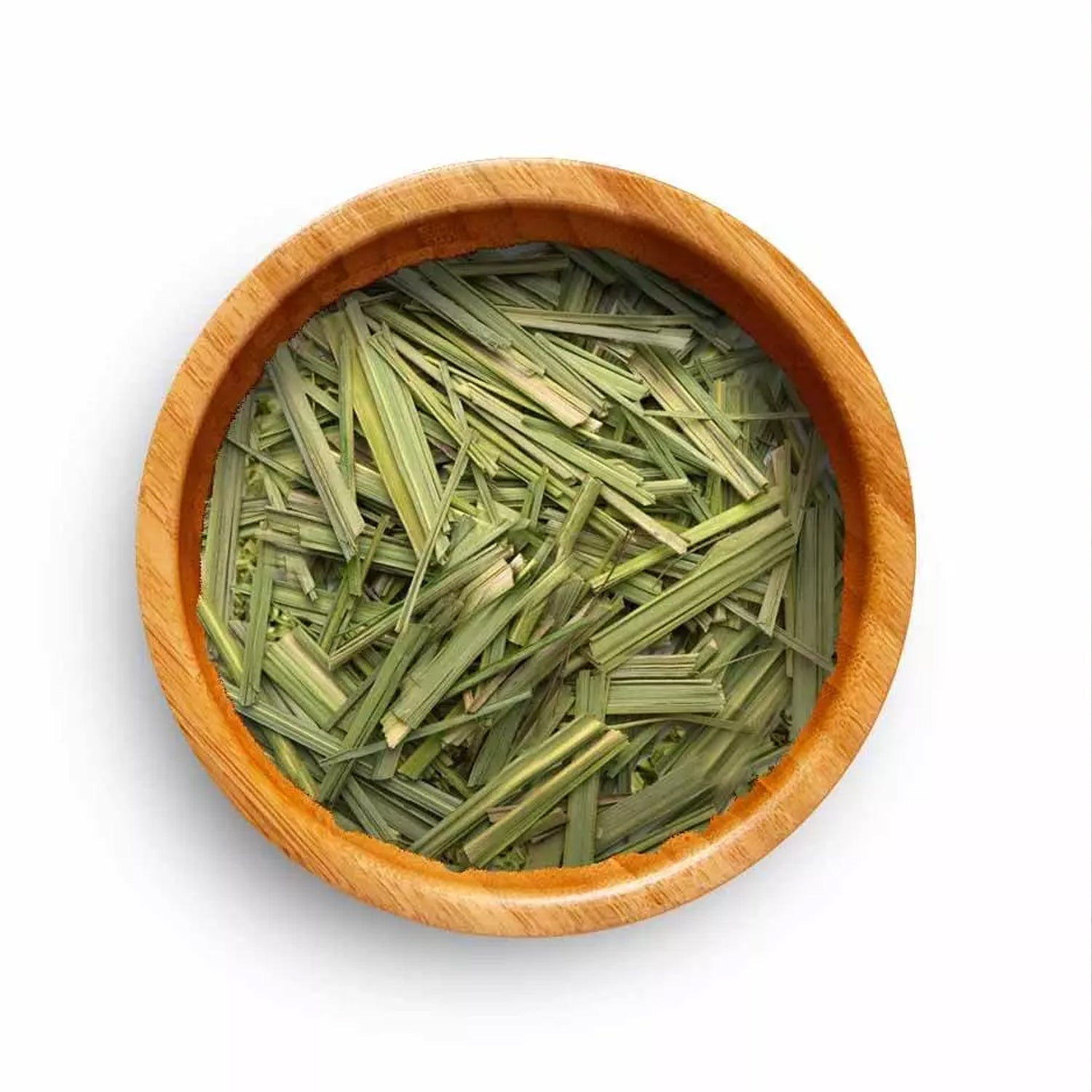
Benefits of Lemon Grass: Culinary and Medicinal Uses
Lemon Grass can transform your favorite dishes and improve your health. Learn about its culinary uses, medicinal benefits, and featured recipes to incorporate this versatile plant into your daily l...

Korean Barley Tea: Tradition and Health in Every Cup
Korean barley tea, known as bori-cha. Learn about its origin, health benefits and how to prepare it at home. A caffeine-free drink rich in antioxidants. Discover the tradition and benefits of this ...



